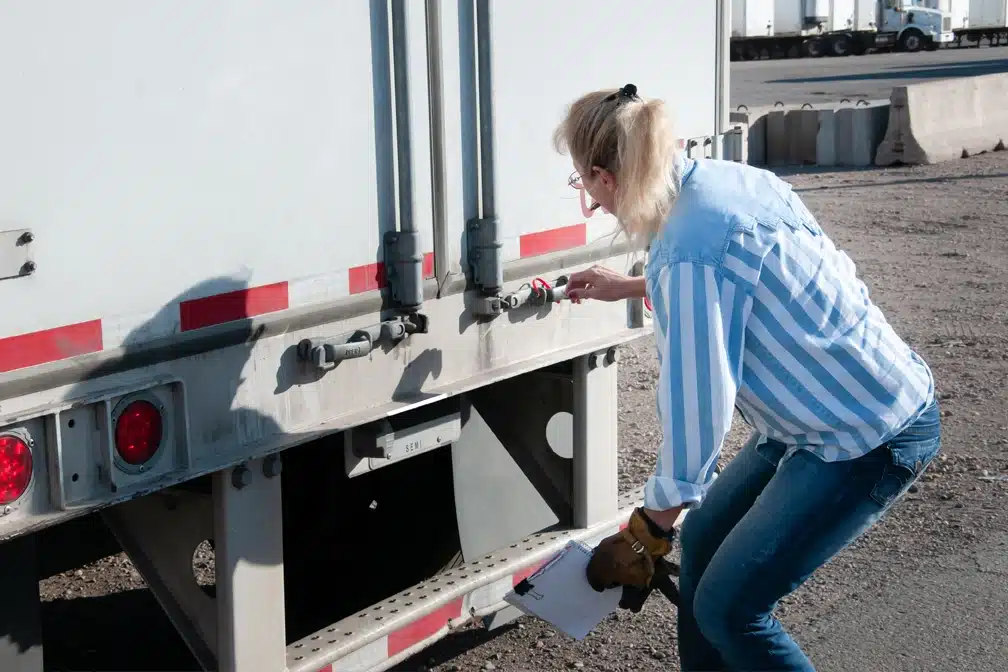Connell High School in Connell, Washington, has formally petitioned the FMCSA to allow students under 18 to obtain commercial learner's permits (CLPs).
Continue Reading
May 19, 2024 2:09 pm

As we move through 2024, the trucking industry faces an unprecedented challenge with freight theft reaching new heights. Experts forecast this year to continue last year’s alarming trend, where incidents surged by 59% in just the third quarter. This spike is a signal for fleets to evolve their defenses in anticipation of even more sophisticated criminal endeavors.
Freight theft has expanded beyond traditional hotspots like California and Texas, affecting the entire nation. Thieves have become more strategic, sometimes posing as legitimate carriers to hijack cargo, a tactic that has found its way into less guarded, inland markets.
One of the more troubling developments is the rise in pilferage near ports, where criminals target pallets or parts of loads. These acts are often more violent, carried out by local offenders rather than organized crime rings, posing an increased risk to truck drivers and the community.
As a truck driver, you can read the trucking industry news-related articles.
The digital landscape offers a new battleground for cargo theft, with incidents of hacking and data manipulation on the rise. The trucking industry’s reliance on technology has made it a target for sophisticated thieves who exploit weaknesses in cybersecurity to intercept cargo. This highlights the critical need for robust cybersecurity measures. This is particularly important for smaller operators who may not have the resources to implement high-level protections.
In response, experts emphasize the importance of due diligence and basic security protocols, such as multi-factor authentication and thorough vetting of carriers. These steps, while seemingly simple, can significantly reduce the risk of theft.

Don’t Miss:
To combat the evolving threat, the industry is advised to employ a mix of traditional vigilance and modern technology. Real-time tracking and digital locking systems have emerged as effective tools against theft. These advancements provide companies with greater visibility and control over their shipments.
Yet, despite these advancements, the industry must remain agile, recognizing that as security measures evolve, so too do criminals’ methods. This ongoing battle demands constant reassessment of risks and strategies, with an emphasis on both technological solutions and human vigilance.
Truck drivers, often the first line of defense against freight theft, face increasing risks. The shift towards more violent pilferage incidents puts them in greater personal danger, highlighting the need for safety protocols and emergency response plans.
The broader implications of rising cargo theft extend beyond the immediate losses of stolen goods. They ripple through the supply chain, affecting delivery schedules, insurance premiums, and ultimately, consumer prices. This underscores the importance of a united front in the trucking industry, combining resources and intelligence to mitigate risks.
The fight against freight theft in 2024 is not just about protecting assets but preserving the integrity of the supply chain. As the industry grapples with this growing threat, collaboration becomes key. Sharing information, adopting best practices, and leveraging technology can create a more resilient defense against thieves.
Educational initiatives and partnerships between law enforcement and private entities also play a crucial role in enhancing security. By fostering a culture of vigilance and preparedness, the trucking industry can better safeguard its drivers, cargoes, and communities against the scourge of theft.
In conclusion, as freight theft continues to rise, the trucking industry must not only adapt to new threats but also anticipate future challenges. Through strategic planning, technological innovation, and collaboration, the industry can navigate the uncertain waters of 2024 and beyond, ensuring its drivers’ safety and cargo security.
For more information and articles from the trucking industry, follow us on Facebook or subscribe to our Truck Driver News newsletter.
Connell High School in Connell, Washington, has formally petitioned the FMCSA to allow students under 18 to obtain commercial learner's permits (CLPs).
Continue ReadingThe U.S. government is increasing scrutiny on Chinese companies that are potentially dodging tariffs by manufacturing Chinese EVs (electric vehicles) in Mexico.
Continue ReadingIn a legal battle that could reshape the trucking industry, 24 Republican states join to bring a lawsuit against the EPA and the state of California.
Continue ReadingThe American Trucking Associations (ATA) has expressed strong opposition to the Department of Justice's proposed rule of marijuana reclassification.
Continue ReadingIn an effort to increase efficiency and sustainability in Trucking, Phillips Industries has launched their new, advanced, stick-on solar panels
Continue ReadingThe 2024 CVSA International Roadcheck is scheduled for May 14-16. Over 72 hours, inspectors across the US will conduct nearly
Continue ReadingAutomated License Plate Readers are a major advance in law enforcement technology but they raise significant privacy and oversight challenges.
Continue ReadingThe EPA's latest emission standards detailed in a final rule issued on March 29 are sparking vigorous debate within the
Continue ReadingOOIDA • ATA • DOT • NASTC • WOMEN IN TRUCKING • NPTC • DRIVER RESOURCES • TDN STAFF • ARCHIVES • SITEMAP